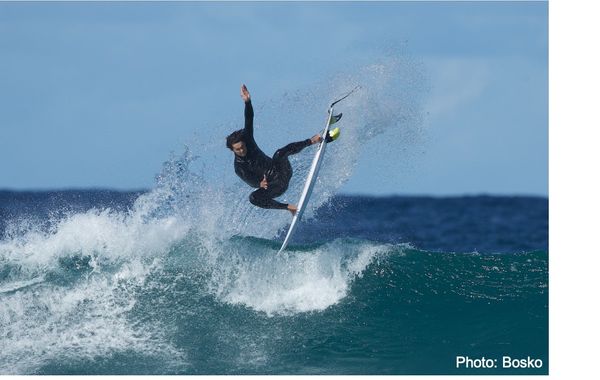
Go BIG or go home

“You gotta go BIG” – this is what young surfers are being encouraged to do as they develop their surfing. It’s not surprising as performing risky and progressive manoeuvres is what surfers must achieve for any chance to be successful on the global stage, but the issue for me is – when should they start to “go big”?
It seems that in some circles, surfers are being advised to “go big” as early as possible – irrespective of whether a surfer is physically or psychologically ready to head down that road. Absolute performance is all that is needed, bugger the possible damage done along the way.
Gymnastics [a sport also known for absolute performance] has previously had a reputation of pushing young athletes “early and hard”. The approach became known as “throwing eggs against a wall”. Those athletes that didn’t break due to the high demands of the sport became the champions – but many others became damaged, never ultimately reaching their true potential.
I see this same “eggs against the wall” trend in surfing, where young talent is being encouraged to go hard, but often with inferior technique, poor strength levels, and lacking the confidence to successfully land their moves. As a result, over-emphasising risky moves too early often creates inferior performances rather than advances a performance – simply because many surfers just aren’t ready to perform these advanced moves of surfing.
When I say ready, I mean:
- Surfers have to be technically sound first, as the movement components of the power moves of surfing are exactly the same ones used in the advanced moves.
- Surfers need to be strong and co-ordinated to handle the greater landing forces encountered when landing advanced moves.
- Surfers need to be confident to attack the lip, layback, or launch into the air, as any hesitation in these situations tend to lead to inevitable wipe-outs and possible injuries.
So what I am saying is … if a child is technically sound, physically strong, and displays confidence in heavy sections on waves – then they should be encouraged to “go hard” – as they are ready. But if they lack any of these traits, time should be spent improving these deficiencies first, before they can be pushed into areas of surfing that could destroy their careers. This approach takes longer, but in the end you create surfers who are confident and ready to take on the world.
